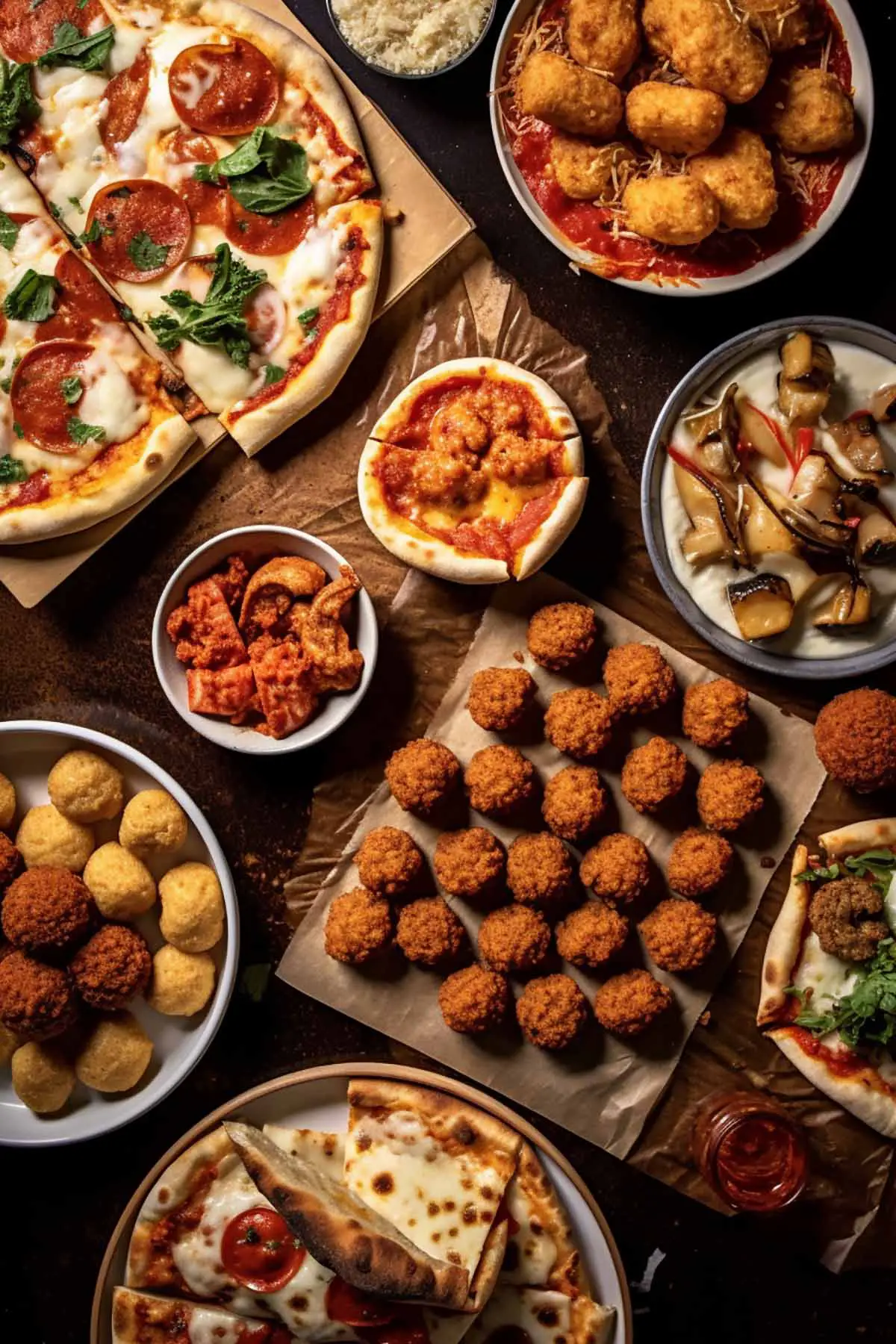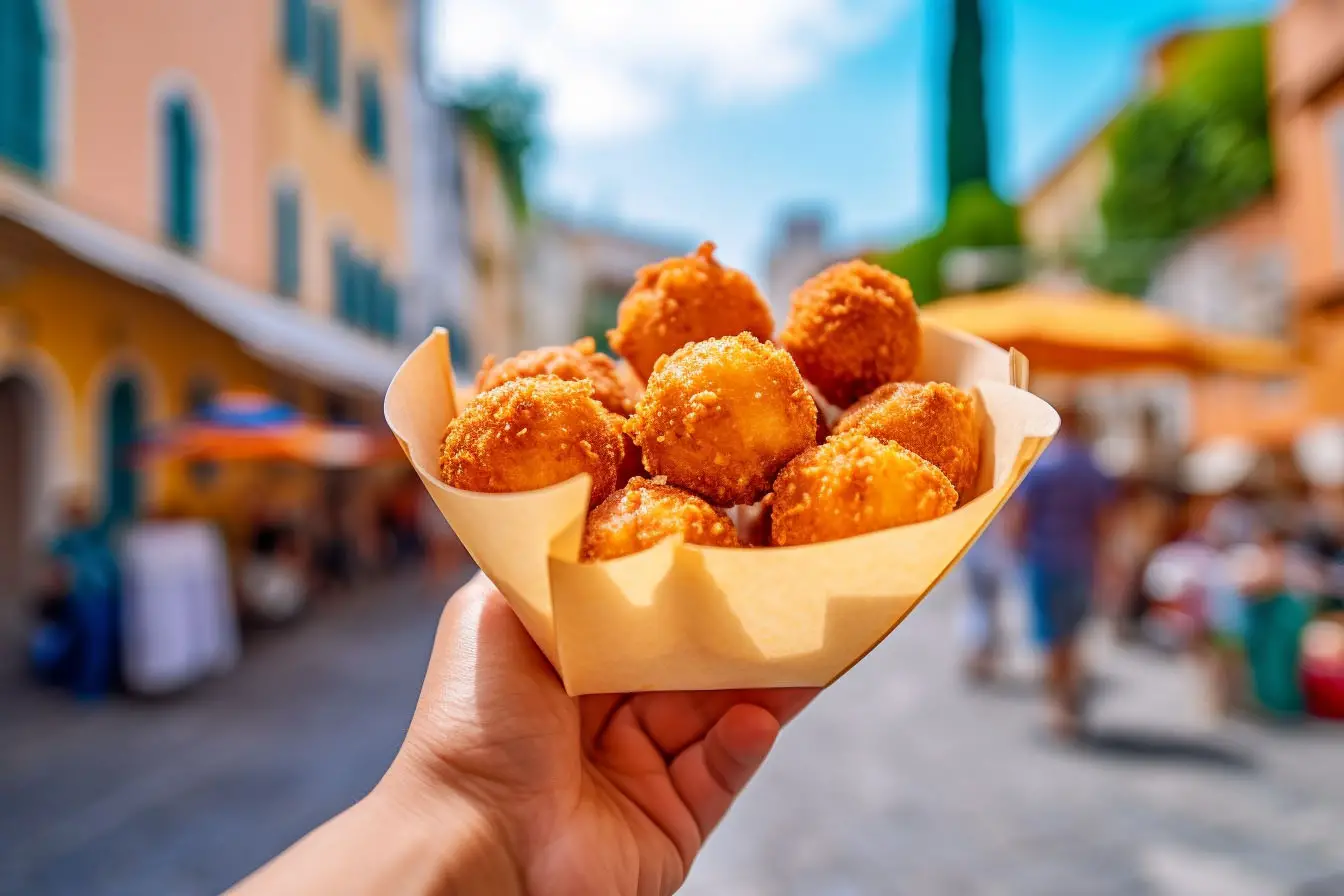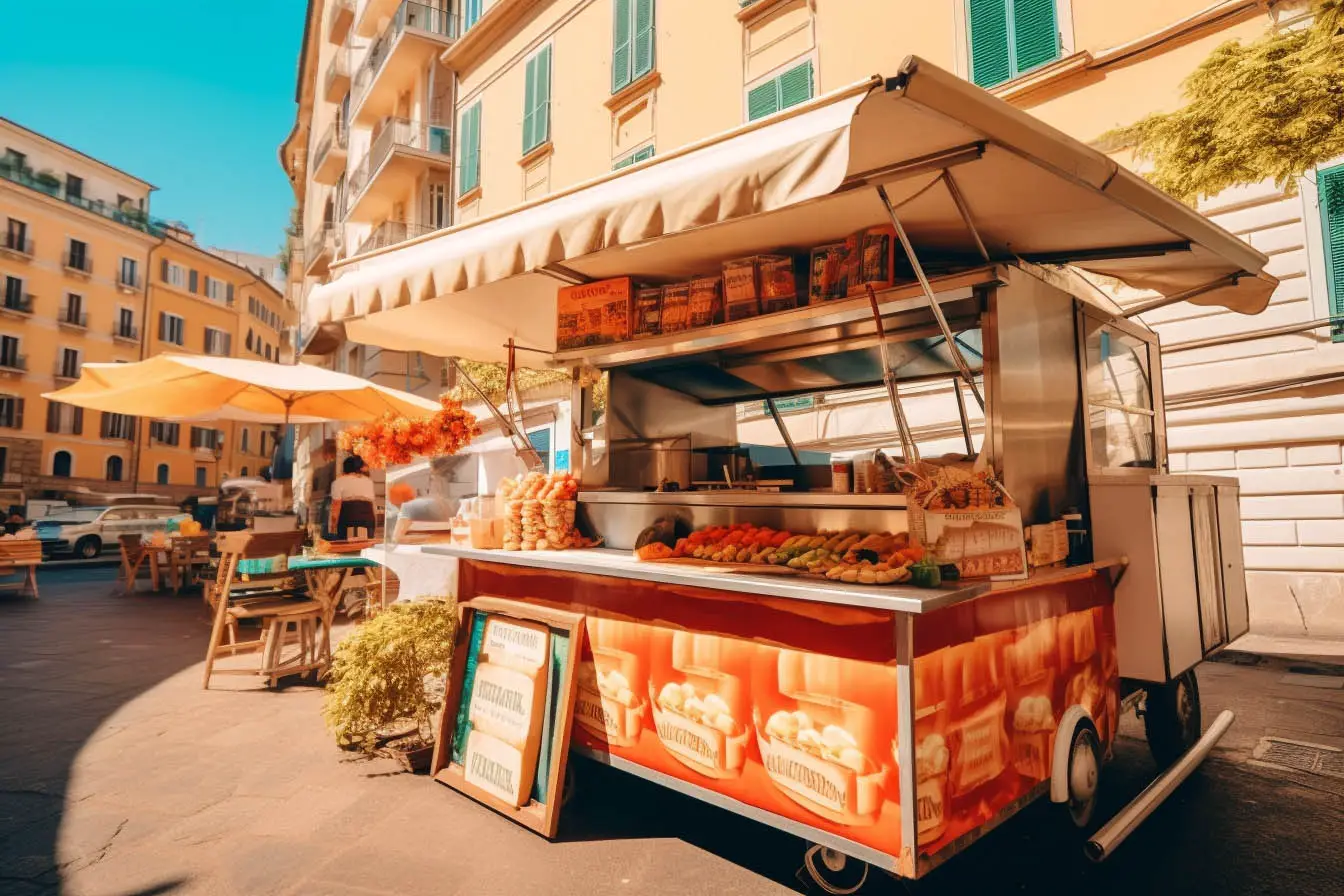From North to South, discover the best and most delicious Italian Street Food. From the iconic pizza and arancini to the simple panini and gelato, these on-the-go delicacies capture the essence of Italy's vibrant food culture on every street corner.

The range of street food has evolved over the years, blending traditional recipes with modern innovations. Classic favorites like Arancini, a cheesy rice ball with a crispy exterior, continue to delight food lovers. While newer creations like Trapizzino, a filled white pizza invented in 2008, take the streets by storm. These delicious treats are born from a marriage of necessity and creativity. They reflect Italy's passion for using simple yet fresh ingredients to produce extraordinary flavors.
If you want to learn more about Italian traditions, check also this Ultimate Guide to Italian Aperitivo.
Jump to:
History and Origin of Italian Street Food
It has a long and diverse history that can be traced back to ancient Rome. Vendors would sell simple, hearty dishes, such as fried fish and roasted meats, to the working class who couldn't afford a sit-down meal. Over time, Italian street food has evolved and expanded, incorporating various regional influences and flavors.
Influence of Different Regions on Street Food
The regional differences in Italian street food can be attributed to the various cultural influences throughout Italy's history. For example, Sicily experienced significant Arabic influence in the 9th century, which is reflected in its cuisine. This blending of cultures led to the introduction of exotic tastes and ingredients, creating a unique culinary experience.
In the south of Italy, particularly in Calabria and Sicily, the tradition of street food is strong and the offerings tend to be more extravagant. The variety found in southern Italy speaks to the region's long-standing street food culture. Northern Italy, however, is not without its own distinctive street foods. Each region of Italy has contributed its own flavors and ingredients to the ever-growing array of options available to street food enthusiasts.
Italian street food continues to evolve and adapt to modern times, with an increasing number of people opting for quick, convenient, and affordable meals offered by street vendors.

Popular Italian Street Foods
Arancini
Arancini are a popular street food originating from Sicily. These deep-fried rice balls are typically filled with ingredients such as cheese, peas, and minced meats. Sicilian arancini can be found at various kiosks and food trucks across the country, particularly in cities like Palermo and Catania.
Pizza al Taglio
Pizza al Taglio is a favorite Italian street food, particularly in Rome and Naples. It is essentially takeaway pizza, served by the slice and featuring various toppings to cater to different tastes. This casual and convenient pizza-eating style makes it perfect for a quick bite while exploring Italy's bustling cities.
Piadina
Originating from the Emilia-Romagna region, Piadina is a popular street food enjoyed across Italy. This flatbread wrap, often referred to as a 'piada,' is filled with a variety of ingredients, from cured meats and cheese to vegetables and sauces. Piadinas can be found in the Emilia-Romagna and Veneto regions, as well as in many other areas in Italy.
Sgagliozze
Sgagliozze is a traditional street food from Apulia, a region in southern Italy. These fried polenta squares are known for their deliciously crispy golden crust and tender interior. They can be found at various street food vendors throughout Apulia and beyond.
Lampredotto
A Florence culinary staple, Lampredotto is made from the fourth stomach of a cow. It's slow-cooked with various seasonings and then served on bread. Although it may sound intimidating, this unique street food offers a rich and flavorful taste that has earned it a loyal following among food enthusiasts in Florence.
Pani ca Meusa
Coming from Palermo, Sicily, Pani ca Meusa is a distinctive dish consisting of a soft bun filled with seasoned spleen and lung meat. Often garnished with a generous sprinkle of lemon juice and optional cheese.
Panelle
Another popular Sicilian street food, Panelle are chickpea fritters that can be enjoyed on their own or served inside a soft bun. These golden-fried treats boast a lovely crunch on the outside and a smooth, flavorful interior.
Zeppole
Lastly, Zeppole is a delightful Italian dessert commonly found in Rome and throughout the country. These fried dough pastries are typically dusted with powdered sugar and filled with either custard, jelly, or honey. Their delightful sweetness makes them a perfect way to end a day of indulging in Italy's delicious street food offerings.

Italian Street Food Culture
Rustic Street Food and Family Dinners
The Italian street food culture is as rich and diverse as the country itself. Rustic street food has its roots in family dinners, where Italian families gather around a table to enjoy a variety of dishes together. Street food vendors often replicate this experience by offering simple, flavorful dishes that evoke fond memories of home-cooked meals.
Food Markets and Trucks
Food trucks and markets are also fundamental aspects of Italian street food culture. These mobile establishments provide a convenient and accessible means for locals and tourists alike to experience Italy's culinary delights. They can range from small kiosks to larger trucks, each offering a unique take on Italian cuisine. Contrary to the stereotype of only serving pasta and pizza, Italian street foods cater to a broad range of tastes and dietary preferences, providing satisfying meals to people on the go.
Regional Specialties
Italy is a country of regional diversity, and each area has its particular street food traditions and ingredients. Sicily, for example, is known for its seafood dishes, inspired by the island's proximity to the sea. In Central Italy, the use of fresh, locally-produced ingredients distinguishes regional specialties from the more familiar, internationally-exported versions of Italian cuisine.
So, whether you're trying savory panzerotti in Apulia, delighting in fresh seafood dishes in Sicily, or exploring the local flavors of Central Italy at a bustling food market, the Italian street food culture offers a genuine and unforgettable taste of this beloved and diverse nation.

FAQ
The best street food can be found in various regions of Italy, with each area offering its unique flavors and specialties. Some vendors have small shops in the city centers, while some have mobile carts and travel from city to city for the weekly street markets.
Italian street food is unique because it focuses on fresh, high-quality ingredients and regional flavors. Italian cuisine is known for its simplicity, and street food is no exception. Dishes are prepared with just a few ingredients, allowing the natural flavors to shine through. In addition, Italian street food often draws inspiration from local culinary traditions.
Yes, there are some chains in the US that bring the authentic taste of Italy to American consumers. For example, Piada Italian Street Food is a popular chain that focuses on serving fast, yet flavorful dishes.


Christina
One of the best reasons to visit Italy!